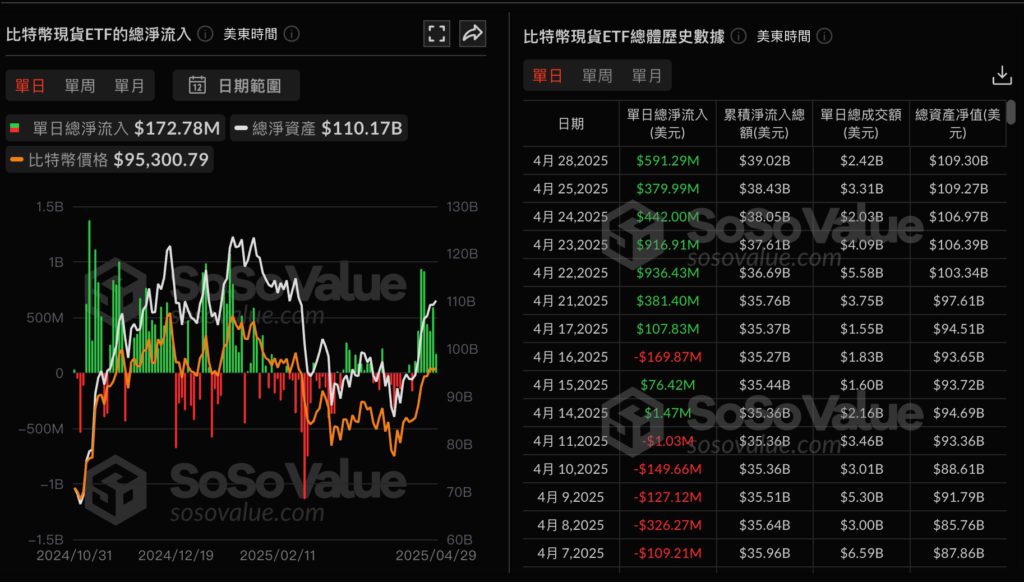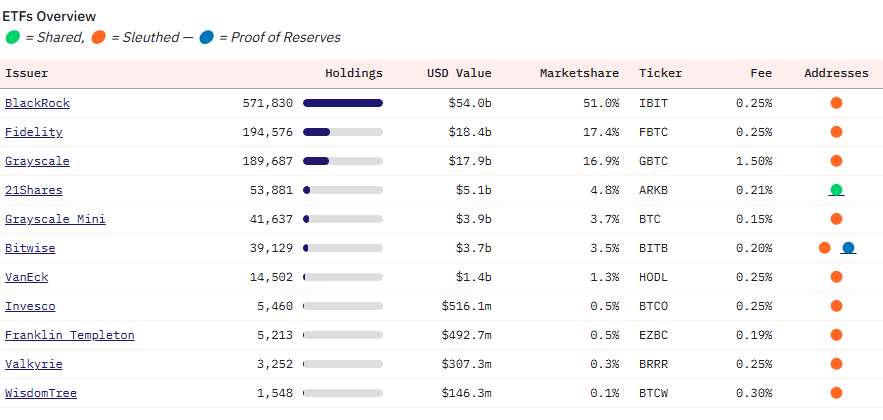Financial giant BlackRock's iShares Bitcoin Trust (IBIT) ETF experienced a net inflow of $970 million on April 28th Eastern Time, marking the second-highest single-day record since its inception. This not only strongly demonstrates institutional investors' continued interest in Bitcoin (BTC) but also sparked heated discussions about whether Bitcoin spot ETFs are becoming a key force in driving price increases and providing "structural support".
Institutional Capital Frenzy: BlackRock IBIT's Astonishing Capital Absorption
According to Sosovalue data, the previous highest single-day inflow record occurred on November 7th, 2024, amounting to $1.12 billion. This nearly $1 billion massive inflow pushed the total net inflow of all US Bitcoin spot ETFs that day to approximately $590 million.
Facing such strong capital momentum, ETF Store President Nate Geraci commented on social media: "Today's iShares Bitcoin ETF inflow of nearly $1 billion... the second-largest inflow since its establishment in January 2024. I remember when people said there was no demand." This powerfully refuted previous claims about insufficient institutional interest in Bitcoin.
Currently, the US Bitcoin spot ETF market has shown net inflows for 7 consecutive days (with the 29th's detailed data yet to be published). Market analysts generally believe that this wave of institutional capital inflow is one of the key factors in Bitcoin's rapid price recovery to $95,000. Nexo analyst Iliya Kalchev explicitly pointed out that last week's over $3 billion ETF net inflow provided the market with "structural support that could potentially drive further increases".

Reshaping Market Landscape: How Bitcoin ETF Provides 'Structural Support'?
Typically, institutional capital inflow helps enhance market maturity and stability. Unlike highly volatile retail speculative behavior, institutional investors usually have longer investment horizons and more stable trading strategies.
In terms of ETF market scale, IBIT, which achieved this massive inflow, is currently the largest Bitcoin spot ETF, with managed assets (AUM) exceeding $56 billion, firmly holding the market leadership. According to Dune data, IBIT occupies over 51% of the entire US Bitcoin spot ETF market, demonstrating its enormous advantage and market influence in attracting capital.
Additionally, according to ETF Database, IBIT has ranked 33rd among global ETFs, with its influence extending beyond the cryptocurrency realm deep into the core of traditional financial markets.

New Trends at the Government Level
Besides the institutional capital inflow from ETFs, recent government-level developments have also shown support for Bitcoin. The Arizona State Legislature passed a milestone bill this Wednesday, allowing up to 10% of public funds to be used for Bitcoin purchases, incorporating it into the state's reserve assets.
If this bill is successfully signed by the governor, Arizona will become the first region in the US to include Bitcoin in official reserves. This not only represents local government recognition of Bitcoin as a value storage form but could also pave the way for similar bills in other US states and potentially at the federal level.
Further Reading:Significant! Arizona Passes Bitcoin Reserve Bill: Up to 10% Public Funds Investing in BTC, Awaiting Governor's Signature
Market Outlook and Potential Risks
Market analysts generally expect that with the continued stable capital inflow from ETFs, if Bitcoin can successfully consolidate above $94,000-$95,000, the next important psychological resistance level might be $100,000.
However, Trump trade war risks continue to exist. Can Bitcoin truly consolidate its "digital gold" status and challenge higher price milestones? The market is watching closely.





